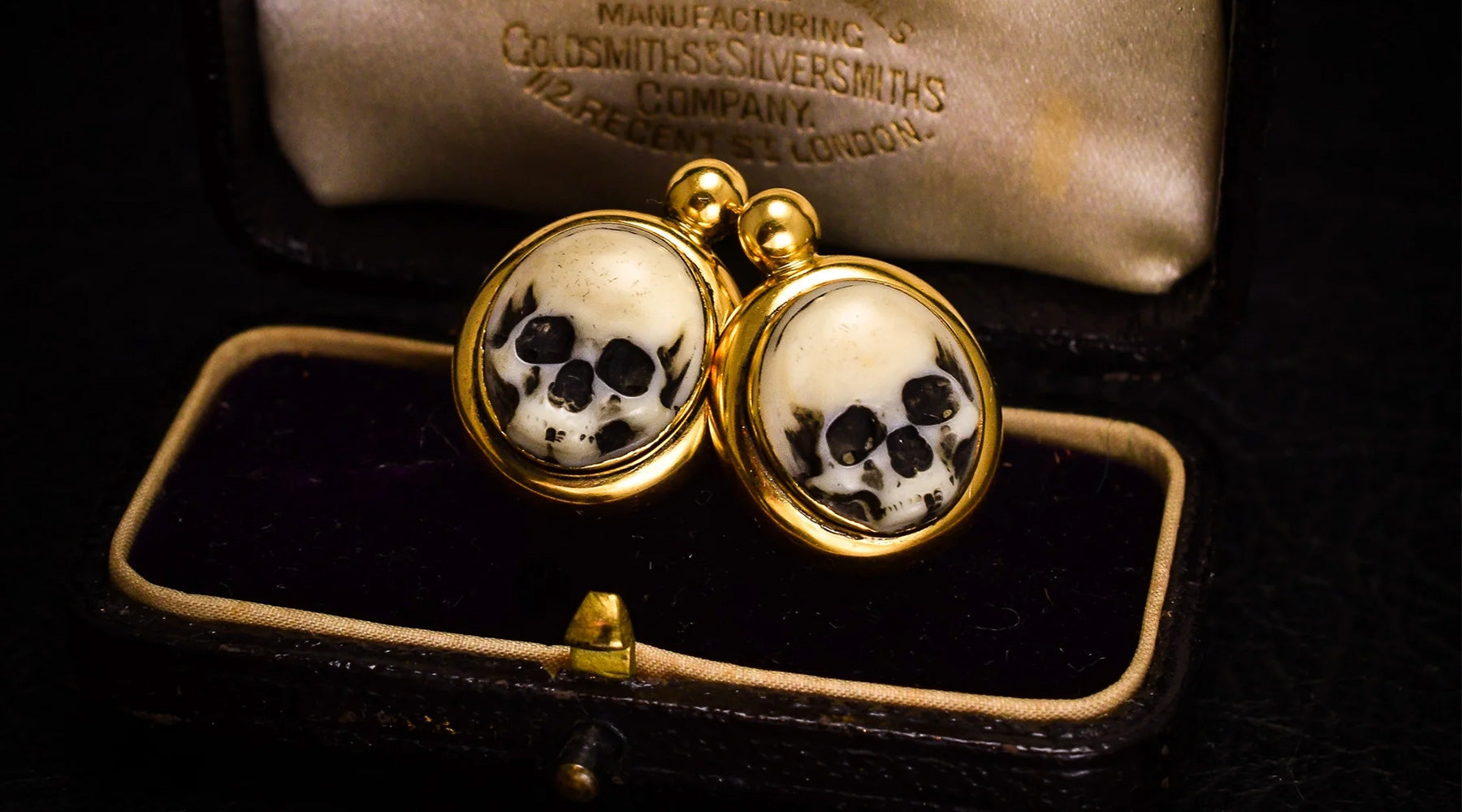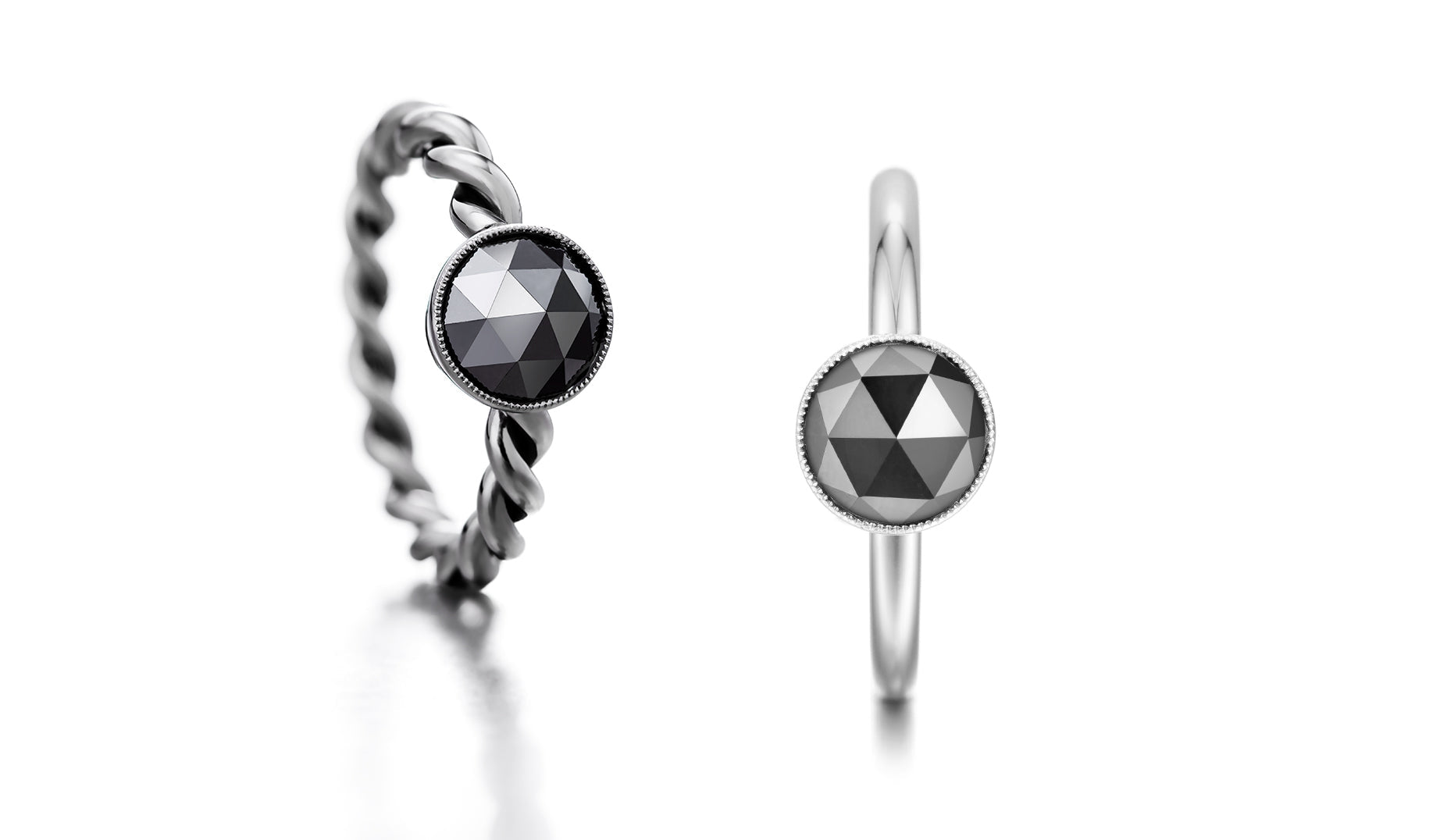
Death, Mourning and Jewelry
What is the idea of all these skulls and bones in Heidi Vornan's jewelry? The gloomy and dark esthetics of her jewelry bear a deeper meaning and can be described as memento mori jewelry.
The latin phrase 'memento mori' means literally 'remember that you must die'. It is believed that the phrase has its origins in ancient Rome, where a slave would whisper it to the ear of a general on victory parade to remind him of his mortality and prevent of being excessively proud and arrogant.
Death has long roots as a theme in arts. In the medieval time death was a feature of daily life so it is no wonder that it became visible also in sculpture, paintings and literature. One of the great inspirational items for Heidi's work is a magnificent renaissance pendant now in the collection of Victoria and Albert Museum. The Torre Abbey Jewel, a renaissance piece depicts an enamelled skeleton in an intricately decorated coffin with black enamel.

Torre Abbey Jewel, c.1540-1550. Victoria & Albert Museum
The thought of dying should not be seen as necessarily a sad thing. It's more like endorsing you not to waste your time but cherish every moment in life. Therefore the phrase Memento mori can be continued with memento vivere - 'remember to live'.
Alongside the memento mori jewelry a similar kind of jewelry evolved: The mourning jewelry. While memento mori jewelry reminds of mortality in general, mourning jewelry commemorates a particular person. The Victorians had a morbid interest in death and mourning and through the 1800s different kinds of ornaments and artifacts of mourning were made.
Mourning was also a social ritual. You were expected to show your grieving. An industry developed to supply women with appropriate clothing and accessories - everything from mourning dresses, capes, veils, mantles, gloves and jewelry. There were different clothing and styles for each social class. Therefore it is not surprising that there were also many styles of mourning jewelry. This little blog post is just a small scratch on the surface of the topic.
https://www.metmuseum.org/art/collection/search/174742

Example of mourning attire of circa 1845. Courtesy of Metropolitan Museum of Art.
When in the Victorian era somebody passed away the nearest would wear mourning clothes and withdraw from social gatherings. There were a lot of rules for how long the mourning would last. A widow, for example, was to wear full mourning clothes for two years. During the first months the clothing was matte black. After six months of mourning, jewelry was allowed to be worn. But it was also supposed to be completely black. Traditional material for the mourning jewelry was jet which is black fossilized wood. It was very fashionable around 1870 and usually carved into large lockets, cameos, crosses, beads and even chains. There were also other black materials like vulcanite, black glass and bog oak to name a few, which were used for this type of jewelry but jet was the most sought after.

La Mode Illustrée 1879

Jet necklace ca 1875. Courtesy Victoria and Albert Museum.
Jewelry made of hair was also another common material in jewelry. The most typical mourning brooches which were already known in the Georgian era have a metal frame and a hairwork under glass. The hairwork can be basket weave or form neatly arranged sprays and flowers. Very many of these brooches have black enamelling with the text 'Memory of ' with the name or initials of the deceased.
The Victorian era was the time when hair became the main material for hair jewelry. Hair could be used as a material in its own right. It was woven in a manner that reminds of lace-making forming hollow tubes and drop shapes, long chains or wide bracelets, each with gilt or golden fittings.

This picture is from a catalogue of hair jewelry by Charles T. Menge, 1873. The rest of the catalogue can be seen on Smithsonian Institute's digital library: https://library.si.edu/digital-library/book/charlestmengequ00char
Other types of mourning brooches or pendants and lockets might have an ornamental front but on the backside was a compartment for the lock of hair.

A locket with hair in knot and braided hair around it, 1795.

A Victorian mourning brooch with braided hairwork, gold, enamel and pearl halves. C. 1860.
Courtesy of the New York Historical Society
Though the black jet jewelry and hair jewelry were often considered mourning jewelry not all black jewelry or hair jewelry were intended for mourning. Though black was considered a color for mourning in the 1870s and 1880s began to be the period when black dresses and jewelry would be considered fashionable. A closer examination of the ornament and studying on the materials and symbols, helps you to identify mourning pieces from other sentimental jewelry.
Mia Hillo


